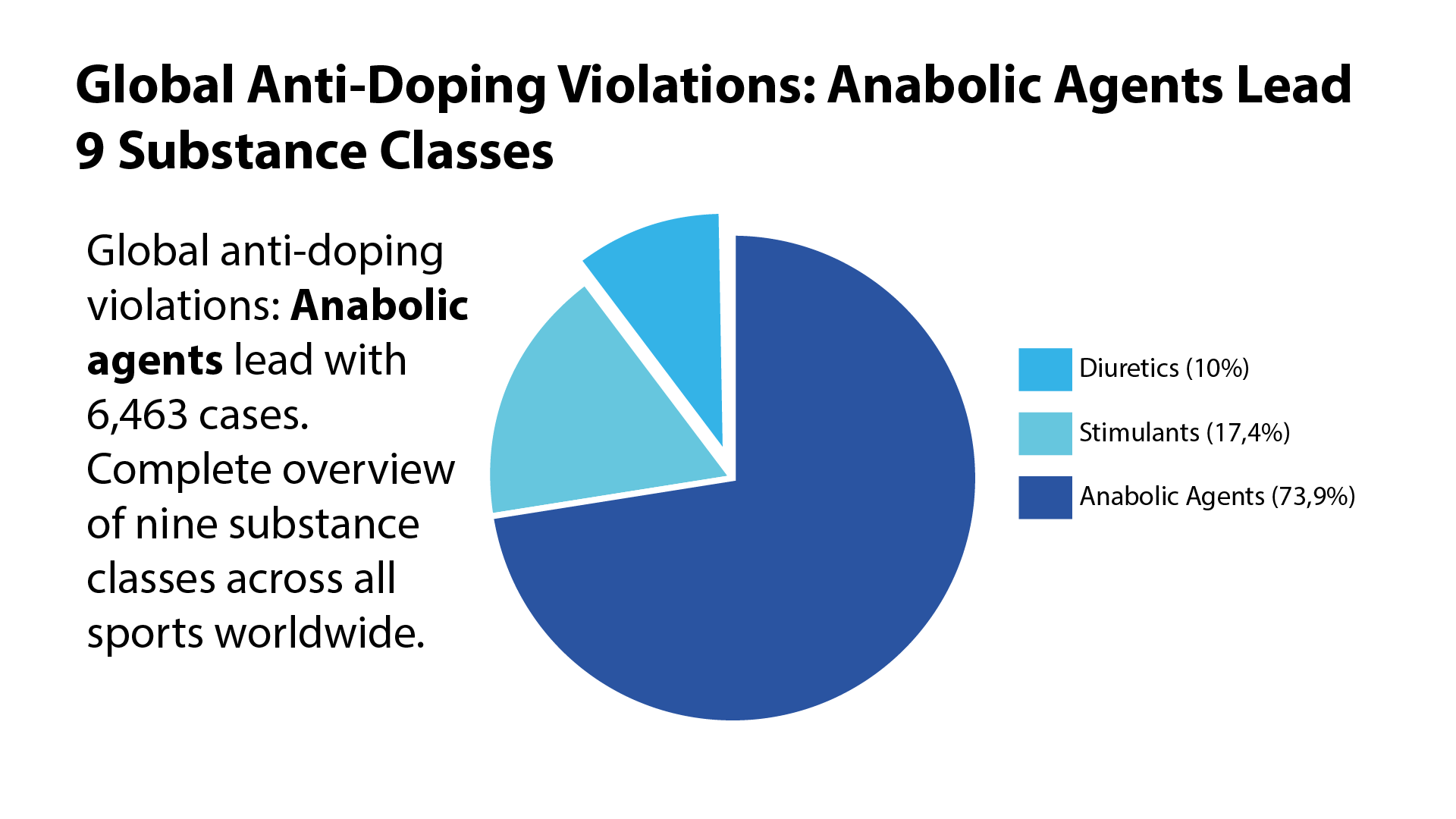Anti-Doping Violations: Nine Primary Substance Classes Dominate Global Sanctions
 July 11, 2025
July 11, 2025 Anti-doping violations worldwide span multiple substance categories, with anabolic agents accounting for the majority of sanctions against athletes across all sports and countries. Data from sanctioned athletes reveals distinct patterns in prohibited substance use, with certain classes appearing far more frequently in violation cases than others.
Anabolic agents represent 6,463 cases in the global database, making them the most detected category of prohibited substances. These synthetic derivatives of testosterone increase protein synthesis within cells, resulting in muscle tissue buildup. Stimulants follow with 1,519 recorded violations, while cases where substance class information remains undisclosed total 1,094 instances.
Diuretics and other masking agents account for 877 violations. These substances can impair the excretion of prohibited substances or conceal their presence in urine samples used during doping control procedures. Specified substances, a category including substances less likely to be successfully abused as doping agents, represent 825 cases.
Cannabinoids appear in 808 violation cases. The psychoactive chemicals derived from the cannabis plant can cause impairment of balance and coordination, loss of concentration, and increased heart rate. Peptide substances, hormones, and growth factors total 460 cases, while hormone and metabolic modulators account for 457 violations.
Blood Manipulation Methods and Respiratory Enhancers
Manipulation of blood and blood components represents 283 cases in the database. This prohibited method aims to improve the body's oxygen supply through various techniques including the administration of blood products or artificial enhancement of oxygen uptake and transport.
Beta-2 agonists, substances typically used to treat respiratory conditions, appear in 156 violation cases. These medications can provide performance advantages when used inappropriately by athletes without legitimate medical needs.
Track and field athletes account for 3,404 of the total violations, representing the sport with the highest number of sanctioned individuals. Weightlifting follows with 1,586 cases, while cycling accounts for 1,468 violations. The data encompasses athletes from powerlifting, bodybuilding, rugby, wrestling, swimming, soccer, and boxing.
Geographic Distribution and Temporal Patterns
The Russian Federation leads in total violations with 1,426 cases, followed by the United States with 1,051 and India with 1,021. Italy, France, Sweden, Brazil, the United Kingdom, Czech Republic, and Australia complete the top ten countries by violation numbers.
Annual violation data shows fluctuations between 2015 and 2025, with peaks occurring in 2019 at 889 cases and 2018 at 838 cases. The years 2020 through 2023 showed varying levels, with 2021 recording 637 cases and 2022 reaching 596 cases.
The database covers violations from 1968 to present, documenting sanctions across all sports and countries worldwide. Each case represents a sanctioned athlete who violated anti-doping regulations through the use of prohibited substances or methods.
